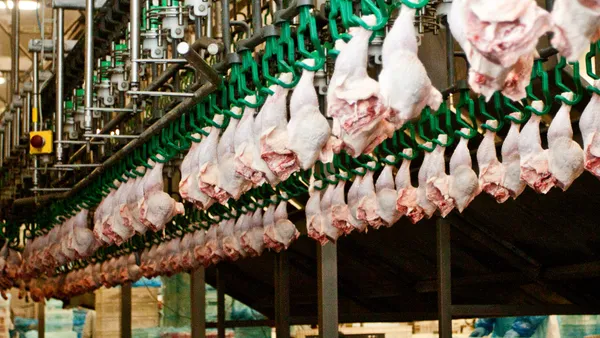Dive Brief:
-
Agriculture groups criticized recent revisions made to the Waters of the U.S. rule this week, saying changes don’t go far enough to address their property rights concerns.
-
The Environmental Protection Agency on Tuesday unveiled changes to WOTUS addressing a recent U.S. Supreme Court ruling, which said the agency needs to make it clearer which bodies of water are covered by the law. New rules remove a contentious test that made it so water on private land was federally protected if it shared a “significant nexus” with U.S. waterways.
-
The Supreme Court ruling was a “golden opportunity” to write a rule that’s fair for farmers, American Farm Bureau Federation President Zippy Duvall said in a statement Tuesday. He said the EPA’s revisions continue “government overreach and revise only a small slice of the rule that was rejected by the Supreme Court.”
Dive Insight:
Uncertainty around the applicability of WOTUS has been a persistent problem, sparking decades of agency action and litigation.
Since the 1970s, the EPA and the Army Corps of Engineers have defined “waters of the U.S.” by regulation as part of the Clean Water Act. Four Supreme Court decisions have addressed the definition and led to agency amendments to the rule.
The latest case, Sackett v EPA, centered around a family who bought a property and began backfilling their lot to build a home in Priest Lake, Idaho. Unbeknownst to the Sackett family, the property contained protected wetlands and the backfilling violated the Clean Water Act.
EPA ordered the Sacketts to restore the site because it was near a ditch that fed into a creek that fed into a protected lake and threatened fines of more than $40,000 per day. The family sued, arguing the property was not “waters of the U.S.”
The 16-year dispute culminated in the Supreme Court’s majority ruling against the EPA in May, with the court saying the agency’s nexus test is overly broad and vague in determining what bodies of water qualify for protection.
“The Act applies to ‘the waters of the United States,’ but what does that phrase mean?” Justice Samuel Alito said for the majority. “Does the term encompass any backyard that is soggy enough for some minimum period of time? Does it reach ‘mudflats, sandflats, wetlands, sloughs, prairie potholes, wet meadows, [or] playa lakes?’ How about ditches, swimming pools, and puddles?”
While the court case had no direct connection to agriculture, farm groups saw the potential implications the judicial decision would have on their constituents. The groups argued that the ambiguity of the law expands the federal government’s reach over private property and creates unmanageable risk and confusion for farmers and ranchers in their daily work.
Shortly after the ruling, the National Cattlemen’s Beef Association, American Farm Bureau Federation and others filed a legal action in a federal court in Texas to strike the entire Waters of the U.S. rule. Thus, pressuring the EPA to replace the rule in a timely manner. The Texas court later granted a stay of litigation challenging the rule until after revisions are made. Further proceedings are expected in the coming days.
The EPA and Army Corps of Engineers published an amendment to their final rule on Tuesday to comply with the high court’s ruling. But several farm groups claimed the agencies didn’t do enough.
“The agency failed to open the process to public comment and engagement, which would have been extremely valuable,” Tom Haag, president of the National Corn Growers Association, said in a statement. “Instead, the agency has released a rule that does not fully respect the holdings from the recent U.S. Supreme Court case on WOTUS. ”
However, Mary-Thomas Hart, chief counsel for National Cattlemen’s Beef Association, was more optimistic about the ruling, saying it’s an important step in the right direction and the organization looks forward to working together to protect farmers and ranchers from burdensome regulations.
A public webinar about the updated changes is scheduled for Sept. 12. The EPA and Army Corps of Engineers plan to host listening sessions this fall to identify issues that may arise from the updated rule.











